Portrait photos of a five-year-old girl in Han Chinese costume (汉服 hàn fú) hit the Internet recently. It is obvious that the photos of girls in this kind of traditional costume easily become a sensation online.
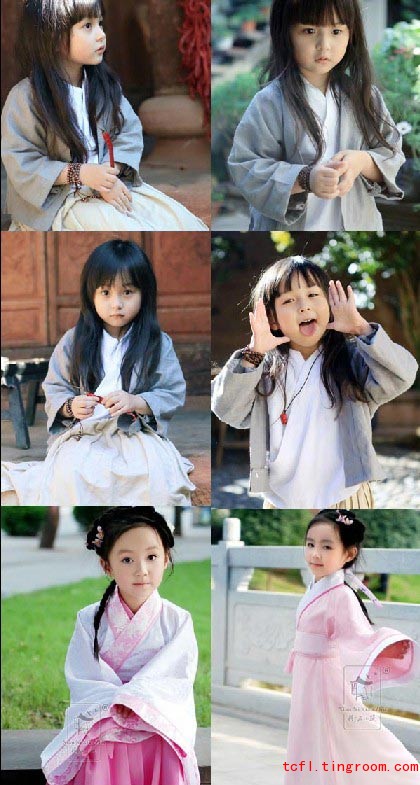
Han Chinese Costume 汉服 hàn fú
Many countries around the world boast distinctive national costumes. Japan has the kimono, Scotland has the kilt, and Germany has the lederhosen. How about China?
The popular Chinese traditional dress, qipao(旗袍 qípáo) or cheongsam, was in fact brought to China by Manchurians in the Qing Dynasty. Prior to the Manchu occupation, Chinese wore the traditional Han Chinese clothing, which was banned during Manchurian' s rule of China. Gradually, Han Chinese clothing disappeared and the qipao became the iconic Chinese traditional clothing.
Nowadays Hanfu are only seen in performances or during certain festive occasions, but during the last decade, there has been a movement in China to revive traditional Han Chinese clothing and reintroduce it to modern life.
Its distinguished features include long and loose sleeves and crossed collars, with the lapel on the right. It is often bound by belts around the waist. Cultural China breaks down the pieces of a typical Hanfu:
- Yi (衣): Any open cross-collar garment, and worn by both sexes
- Pao (袍): Any closed full-body garment, worn only by men in Hanfu
- Ru (襦): Open cross-collar shirt
- Shan (衫): Open cross-collar shirt or jacket that is worn over the yi
- Qun (裙) or chang (裳): Skirt for women and men Ku (裤): Trousers or pants

There are two parts overlapping on the front. This is called ‘Jiao Ling’ (Crossing Collar), which is a main feature of nearly all Asian costumes. The order of the two parts is quite important. From the wearer’s point of view, the crossing is always on his/her right side, which is called ‘You Ren’ (Right Front). Therefore an easy way to recognize Hanfu is that its collar forms a ‘y’ shape if you look at the dress from the front.
Hanfu usually has a waistband, on which various little decorations are hung, including Yu (jade) and Chinese knots. These hung decorations, together with the long ribbons and relatively wide sleeves, can sway as one walks. Its idea is to cover up any imperfections and to accentuate the bodily beauty of an East Asian woman.
There are three basic makes of hanfu, 衣裳制, 深衣制, and 长衫制.
1. 衣裳制 (yīshang zhì), is separated into a top and a bottom piece of clothing.
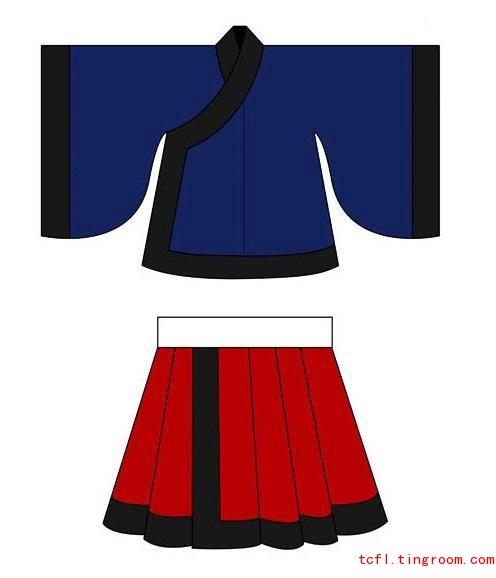
For Males
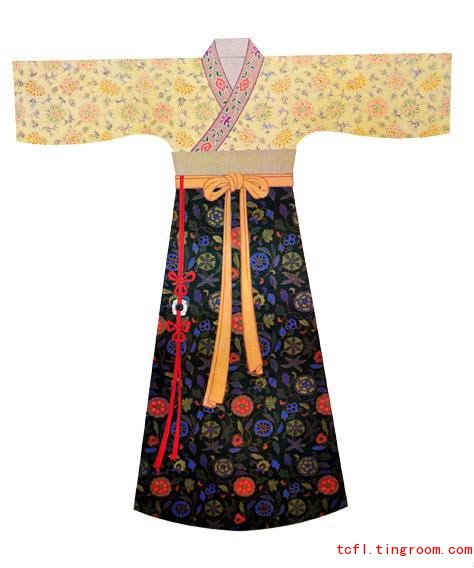
or Females, 襦裙 rú qún
2. 深衣制 (shēn yī zhì), wher the top and bottom are sewn together into a whole piece.
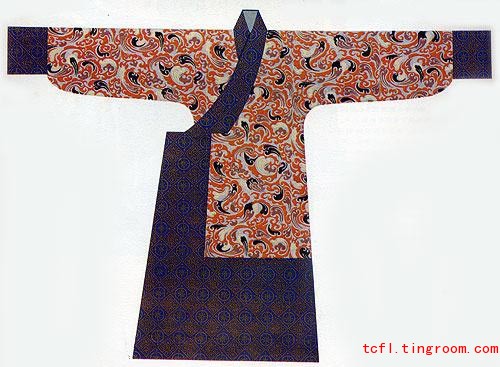
3. 长衫制 (chángshān zhì), wher the top is extended into a long shirt.
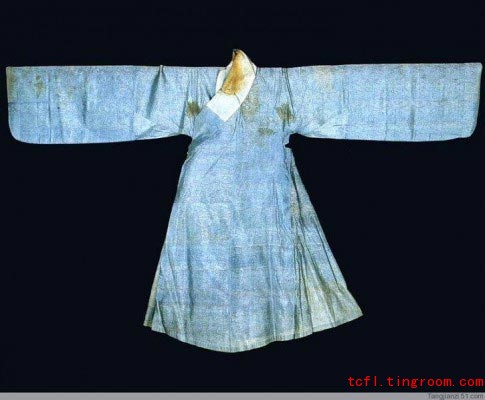
直身 zhí shēn (male)
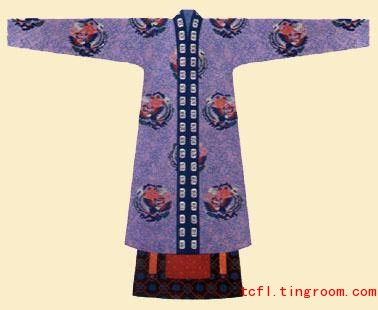
褙子 bèi zi (female)
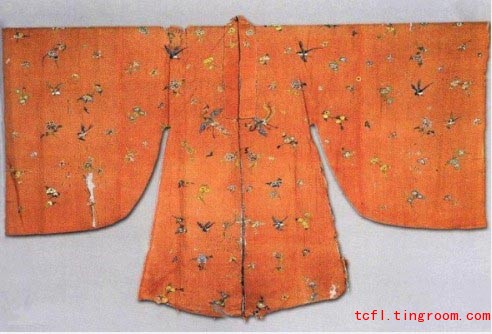
披风 pīfēng (female)
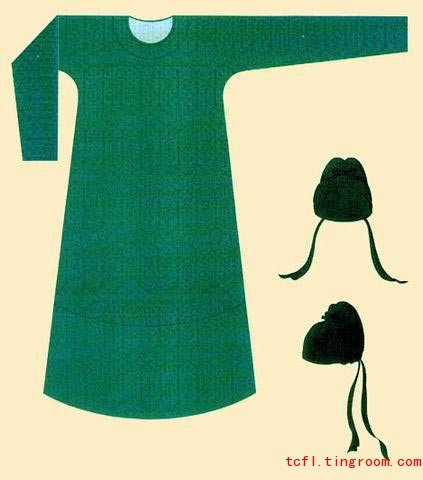
圆领 yuán lǐng (male)
 English
English Japanese
Japanese Korean
Korean French
French German
German Spanish
Spanish Italian
Italian Arab
Arab Portuguese
Portuguese Vietnamese
Vietnamese Russian
Russian Finnish
Finnish Thai
Thai dk
dk